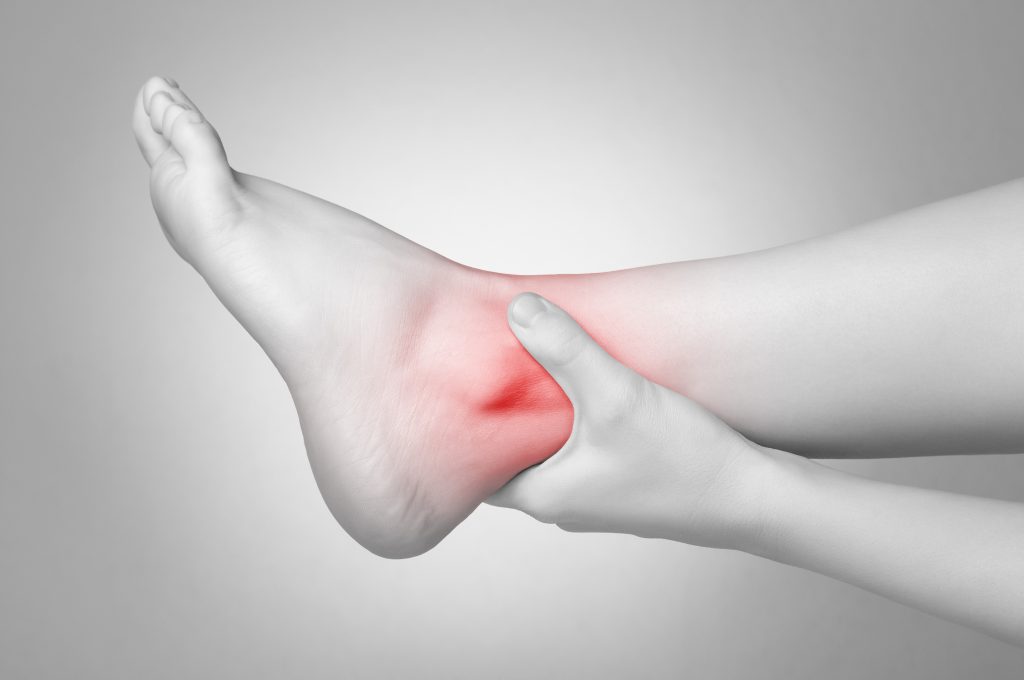The Tunnel Effect: All About Tarsal Tunnel Syndrome

Tingling feelings in the feet. Numbness and sensitivity. Sharp, shocking sensations.
These may be signs of tarsal tunnel syndrome, a painful condition caused by the compression of the posterior tibial nerve in the feet and ankles. The symptoms of this syndrome are comparable to plantar fasciitis pain, Morton’s neuroma pain, and more, making it very easy to confuse with other conditions.
What do you need to know about tarsal tunnel syndrome to be able to identify the condition and find relief?
What You Need To Know About Tarsal Tunnel Syndrome
The tarsal tunnel is located in the foot at the interior area of the ankle (medial). This narrow tunnel is surrounded by a ligament that aids in protecting veins, arteries, and nerves. Due to injury, abnormalities, disease, and structural conditions including flat-footedness, excess pressure can be placed on the tarsal tunnel and cause it to compress. Sometimes there is a ganglion cyst in that area to blame as well.
The posterior tibial nerve is located within the tarsal tunnel. This nerve extends from the sole of the foot, through the heel, and into the back of the calf. When this nerve is squeezed, the results can be especially uncomfortable. This condition is termed tarsal tunnel syndrome. These painful or numbing sensations can make it difficult to walk, stand, or exercise, and the symptoms can be triggered by excess time on your feet or overexertion. This condition is similar to ‘Carpal tunnel syndrome’, but happens at the ankle and not at the wrist.
Again, the symptoms of tarsal tunnel syndrome can feel very similar to a variety of other conditions affecting the foot and ankle, so make sure to consult with a doctor to target the exact cause of your pain. Many who have failed traditional treatments for plantar fasciitis have a different condition; this is one of them.

What Are Your Treatment Options?
There are a few ways that you can help to alleviate your symptoms at home. Following the traditional RICE method can help to lessen swelling, stress, and pain.
RICE stands for Rest, Ice, Compression, and Elevation. Begin by giving your body time to relax without further straining your injury. Apply an ice pack to your ankle for fifteen minutes to bring down swelling. Next, wrap the ankle snugly with a medical bandage to further protect against swelling – just make sure not to make this tight enough to cut off circulation. Lastly, prop your legs up. This elevation helps to relieve painful sensations in the feet and further aid in resting them.
Over-the-counter pain medication can also help to relieve pain, as can physical therapy. In serious cases, surgery may be considered. Consult with your personal physician to find the right method of lasting-relief for you.
Stretching the heel cord and the plantar fascia itself helps with foot pain. However, if a nerve compression is involved even more stretching is necessary. You will also need to stretch the hips and the hamstrings to fully address this source of pain.
Relief From Warner Orthopedics & Wellness
It is important to consult with a foot and ankle surgeon to help you determine the reasons for your pain and help you find the right channel of treatment. At Warner Orthopedics & Wellness, you can trust that you are in good hands.
Dr. Meredith Warner is an orthopedic surgeon who is passionate about helping you recover quickly and get back to your life without being slowed down by pain. She is an expert in nerve-based pain along with connective tissue disorders. Dr. Warner and the staff at Warner Orthopedics work with you to help you find a customized treatment plan, ranging from physical therapy to acupuncture, yoga and more. If surgery is necessary, she and her team will ensure that the best and safest procedure is chosen. Contact us today to start your recovery journey!





